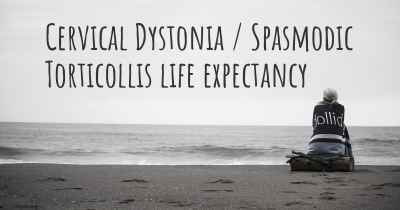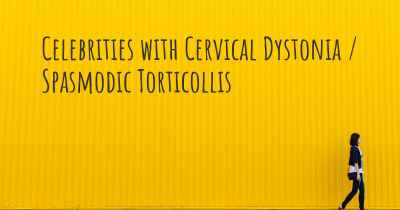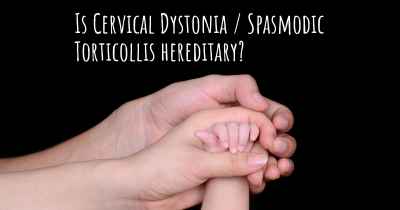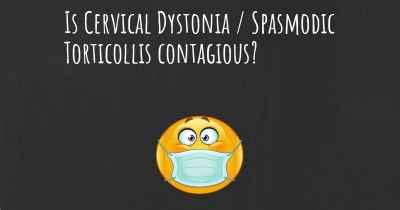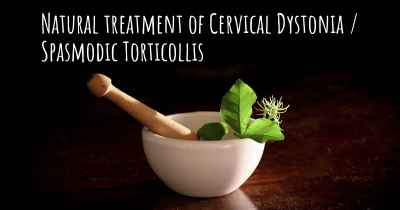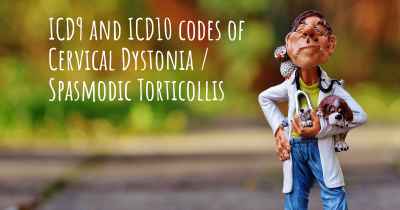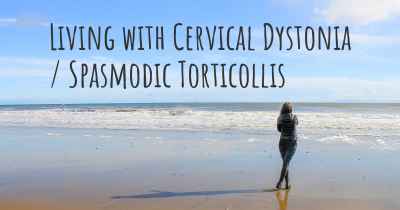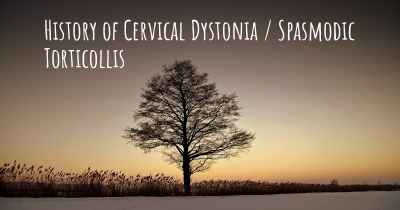Cervical Dystonia / Spasmodic Torticollis diet. Is there a diet which improves the quality of life of people with Cervical Dystonia / Spasmodic Torticollis?
Are you aware of a diet that can improve the quality of life of people with Cervical Dystonia / Spasmodic Torticollis? Is there a diet that is suggested to avoid when having Cervical Dystonia / Spasmodic Torticollis? See if there is a diet that can improve the quality of life of people with Cervical Dystonia / Spasmodic Torticollis, recommended and to avoid food when having Cervical Dystonia / Spasmodic Torticollis
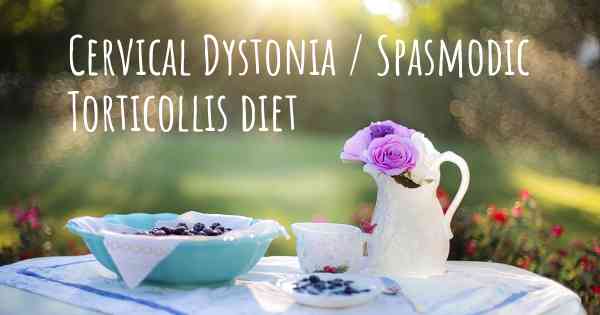
Cervical Dystonia / Spasmodic Torticollis Diet: Improving Quality of Life
Cervical dystonia, also known as spasmodic torticollis, is a neurological disorder characterized by involuntary muscle contractions in the neck, causing abnormal head movements and postures. While there is no specific diet that can cure or completely alleviate the symptoms of cervical dystonia, adopting a healthy and balanced diet can play a significant role in improving the overall quality of life for individuals with this condition.
The Importance of a Balanced Diet
A balanced diet is essential for everyone, but it becomes even more crucial for individuals with cervical dystonia. A well-rounded diet provides the necessary nutrients, vitamins, and minerals that support overall health and well-being. It can help manage symptoms, boost energy levels, and improve the body's ability to cope with the challenges posed by the condition.
Key Nutrients for Cervical Dystonia
While there is no specific diet plan for cervical dystonia, focusing on certain nutrients can be beneficial:
- Omega-3 Fatty Acids: Found in fatty fish (such as salmon and mackerel), flaxseeds, and walnuts, omega-3 fatty acids have anti-inflammatory properties that may help reduce muscle inflammation and improve symptoms.
- Antioxidants: Foods rich in antioxidants, such as fruits (berries, citrus fruits) and vegetables (spinach, kale, broccoli), can help combat oxidative stress and inflammation in the body.
- Vitamin D: Adequate vitamin D levels are important for muscle function and overall health. Sunlight exposure and foods like fortified dairy products, eggs, and fatty fish can help maintain optimal vitamin D levels.
- Magnesium: Magnesium-rich foods like leafy greens, nuts, seeds, and whole grains can help relax muscles and reduce muscle spasms.
- B vitamins: B vitamins, particularly B12, are essential for nerve health. Including foods like lean meats, fish, eggs, and fortified cereals can ensure an adequate intake of B vitamins.
General Dietary Guidelines
In addition to focusing on specific nutrients, following these general dietary guidelines can further enhance the quality of life for individuals with cervical dystonia:
- Hydration: Staying well-hydrated is important for overall health and muscle function. Aim to drink an adequate amount of water throughout the day.
- Whole Foods: Emphasize whole, unprocessed foods in your diet. Fresh fruits, vegetables, lean proteins, whole grains, and healthy fats should form the foundation of your meals.
- Limit Trigger Foods: Some individuals with cervical dystonia may find that certain foods or additives exacerbate their symptoms. Common triggers include caffeine, alcohol, processed foods, and artificial sweeteners. Pay attention to your body's response and consider eliminating or reducing these triggers from your diet.
- Manage Weight: Maintaining a healthy weight can help alleviate strain on the muscles and joints, potentially reducing symptoms. Incorporate regular physical activity and portion control into your lifestyle.
- Consider Professional Guidance: Consulting with a registered dietitian or nutritionist who specializes in neurological conditions can provide personalized dietary recommendations and support.
Conclusion
While there is no specific diet that can cure cervical dystonia, adopting a balanced diet rich in essential nutrients can contribute to an improved quality of life for individuals with this condition. Prioritizing omega-3 fatty acids, antioxidants, vitamin D, magnesium, and B vitamins can potentially help manage symptoms and support overall health. Additionally, following general dietary guidelines such as staying hydrated, consuming whole foods, limiting trigger foods, managing weight, and seeking professional guidance can further enhance the benefits of a healthy diet. Remember to consult with your healthcare provider or a registered dietitian for personalized advice tailored to your specific needs.
Posted Jul 5, 2021 by TT 3100
